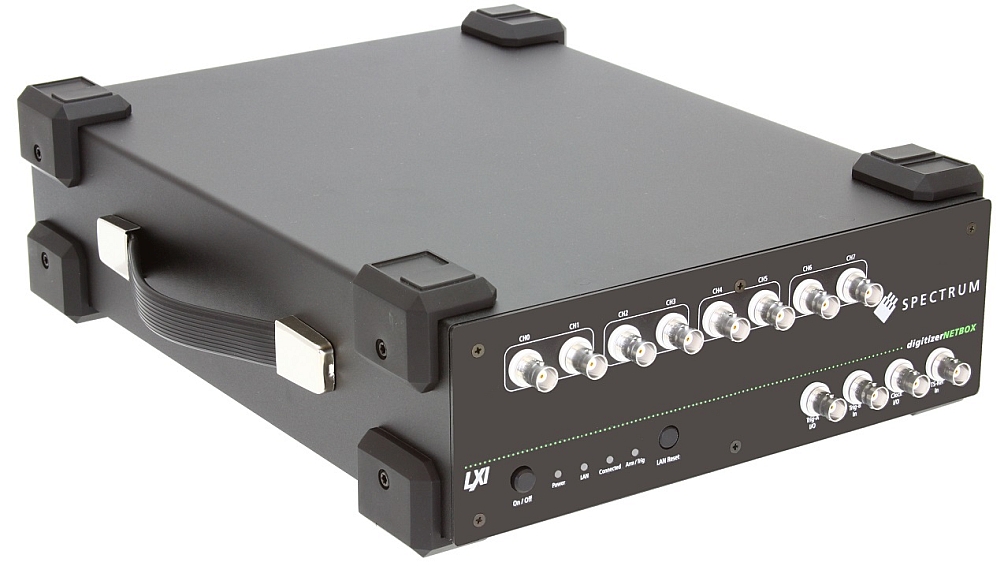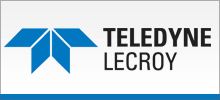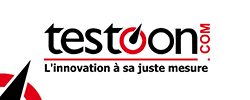- Spectrum Instrumentation has announced standalone versions of its M2p.59xx range of PCI Express format digitizers.
- The DN2.59x digitizerNETBOX series consists of different models with 4, 8 and 16 channels.
- These modules digitize the signals in the DC to 60 MHz frequency range on 16 bits with a sampling rates from 20 MS/S to 125 MS/S on each channel.
- Each channel has its own Analog to Digital converter and an independent amplifier.
These new DN2.59x units all use 16-bit Analog to Digital (ADC) converters that provide over 65,000 levels of resolution compared to 256 levels for an 8-bit ADC.
The control and access to the data collected by the digitizerNETBOX is done by connecting it via a GBit Ethernet interface to a host computer or anywhere on the company network. The platform is LXI compliant (according to Core 2011 specifications) and offers an IVI compatible interface for the IVI Scope and Digitizer classes. Users can write their own control program using languages such as C+++, VB.NET, C#, J#, Delphi, Java and Python.
Users can also use SBench 6 Professional the Spectrum software that comes standard with the products. All hardware modes and settings can be controlled via a software interface. The software also has functions for data analysis and documentation: FFT analysis, XY display, function interpreter, parameter measurements, ASCII export, Wave, Matlab, comment functions (for annotating signals or displays) as well as a report editing and printing function.
The DN2.59x series products also provide software selectable, single-ended and differential input modes. Each channel has its own ADC and independent amplifier. The amplifiers have a selectable input impedance (50 Ohms and 1 MOhms) and a calibrated gain with ranges from ±200 mV to ±10V full scale. Variable gain allows the input signals to be scaled to cover the full dynamic range of the ADC. All channels are synchronized so that phase error is minimized and measurements between channels can be performed accurately. The on-board memory (up to 1 GS) allows to acquire and store waveforms.
These acquisition modules offer different trigger and acquisition modes. Triggering on problem signals like glitches, spikes, bursts, or even when specific patterns occur, allows storing the recorded waveforms in the memory. Transient capture, Multiple (burst) Recording, Gated Sampling, ABA sampling and data streaming (FIFO) modes are all supported.






